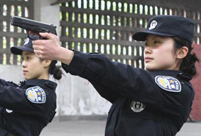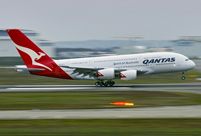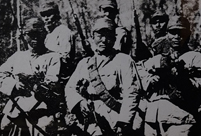 Chinese artists from Flight MH370 and their art
Chinese artists from Flight MH370 and their art
 Top 30 entrepreneurs under 30 in China
Top 30 entrepreneurs under 30 in China
 800-year-old ancient village in Shanxi
800-year-old ancient village in Shanxi
 World's top 10 most prestigious institutions
World's top 10 most prestigious institutions
 Chinese airborne troops conduct low altitude flight training
Chinese airborne troops conduct low altitude flight training
 Beautiful fisherwomen in SE China
Beautiful fisherwomen in SE China
 1,500-year-old coffin excavated from grassland in N China
1,500-year-old coffin excavated from grassland in N China
 See what Google glass captures at 'two sessions'
See what Google glass captures at 'two sessions'
 In pictures: beautiful women in different ages
In pictures: beautiful women in different ages
ZHENGZHOU, March 18 -- The ruins of an ancient Chinese imperial palace have been unearthed in central China's Henan Province, local archaeologists have said.
They said the Taiji Palace complex covers 6,000 square meters and dates back to 1,700 years ago. It was the center of the ancient capital city of Luoyang in the Han Dynasty (206 BC-220 AD) and the Wei State during the Three Kingdoms period (220-280).
Liu Tao, a research with the Chinese Academy of Social Sciences, said the palace marked a new era in the construction of ancient Chinese capital cities.
The ruins of the palace was unveiled after three consecutive years of excavation by archaeologists, Liu said in a recent interview with Xinhua.
Starting with the newly unearthed palace, ancient capital cities were built in an axial structure with the main palace at the center, symbolizing the supremacy of imperial power, Liu said. Previously, ancient capitals were built with multiple imperial palaces, according to Liu.
According to historical records, the Taiji Palace was built by Emperor Ming of the Wei State during the Three Kingdoms in 235 AD.
It was used as the major palace in the capital city. The most important imperial activities were carried out there, such as the new year celebration, the enthronement of new emperors, and political decision making.
Luoyang served as the capital of several dynasties starting in 770 BC, including the Eastern Zhou, Eastern Han, Wei of the Three Kingdoms, Western Jin, Northern Wei, Sui, Tang, the Later Liang and the Later Tang.
The excavation, which began in July 2011, was conducted by the archaeological research institute of the Chinese Academy of Social Sciences. A set of new technologies and measures, including three dimensional scanning and image restoration, were used during the exploration and excavation.
The excavation work has not yet been completed as archaeologists are still working to unearth the annex of the palace.
 Female journalists at 'two sessions'
Female journalists at 'two sessions' Interpreters serving 'two sessions'
Interpreters serving 'two sessions' Female SWAT team in Chongqing
Female SWAT team in Chongqing Top 10 safest airlines in the world
Top 10 safest airlines in the world Old photos of Anti-Japanese War
Old photos of Anti-Japanese War Mysterious 'Dolan Tribe' in Xinjiang
Mysterious 'Dolan Tribe' in Xinjiang A bite of Luoping County
A bite of Luoping County This is Shanghai
This is Shanghai Chinese airborne troops complete parachute training in various training bases
Chinese airborne troops complete parachute training in various training bases Ballerinas anywhere but onstage
Ballerinas anywhere but onstage Most unusual taxis around the world
Most unusual taxis around the world Micro-expression at 'two sessions'
Micro-expression at 'two sessions' Bridge Worship Festival in Taijiang, SW China
Bridge Worship Festival in Taijiang, SW China Hollywood documentary brings Diaoyu Islands truth to new audience
Hollywood documentary brings Diaoyu Islands truth to new audience Miss HK and actresses shine at flower show
Miss HK and actresses shine at flower showDay|Week|Month